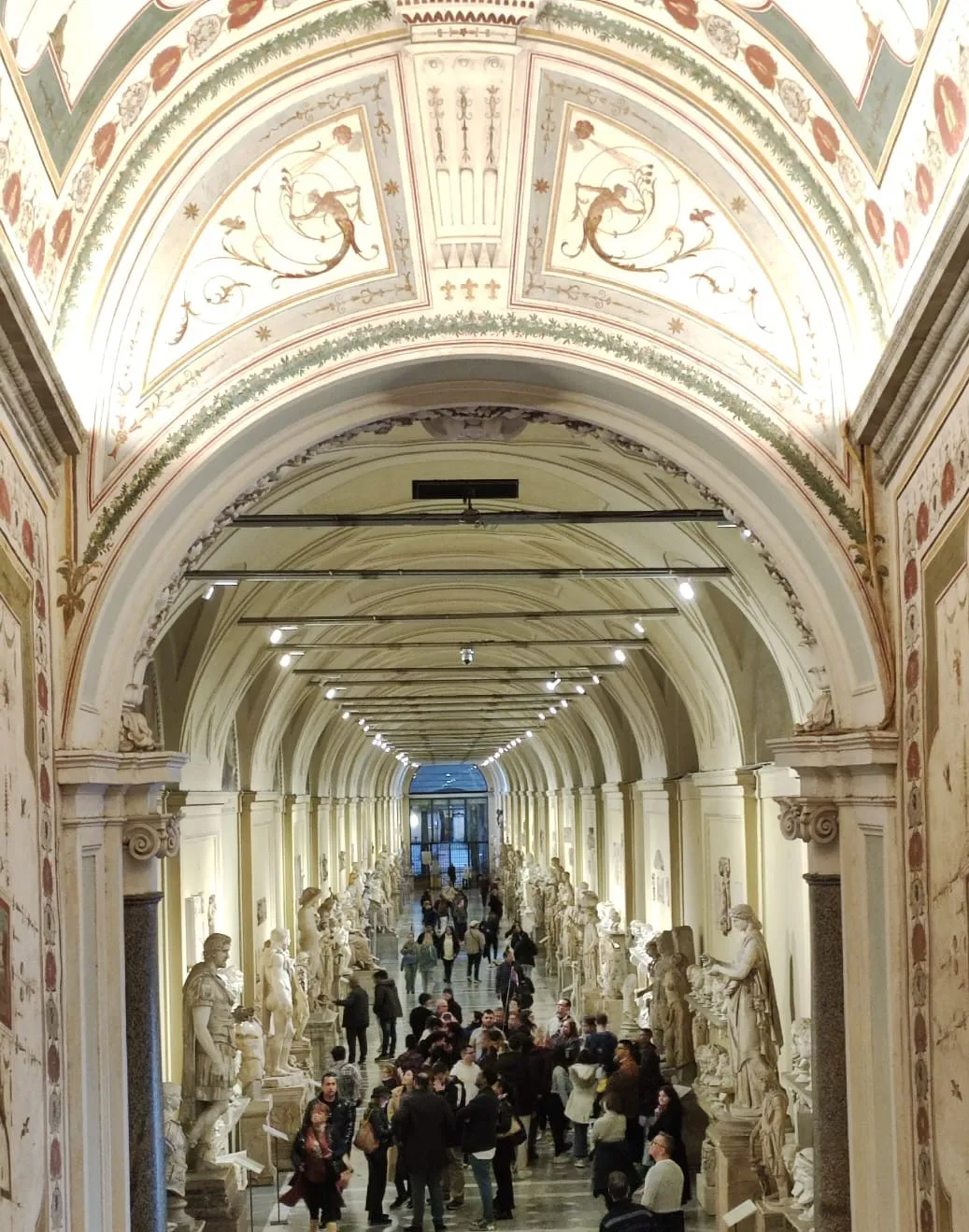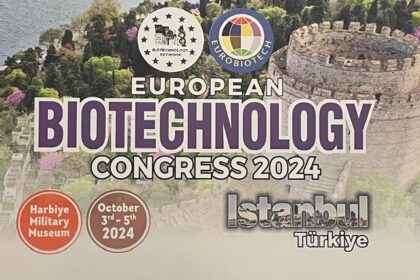The Vatican Museums are a true treasure trove of knowledge and historical memory, safeguarding not only extraordinary works of art but also clues and testimonies about the evolution of human civilization. They represent a unique intersection of diverse worlds: the earthly and the spiritual, the material and the ethereal, the known and the unknown. From Egyptian collections to gardens rich with symbolism, from maps showcasing advanced geographical knowledge to documents preserved in the Secret Archives, the Vatican Museums offer a singular perspective on the development of knowledge through earthly and, perhaps, celestial influences.
The Egyptian Museum: A Connection to the Origins of Human Knowledge
The Egyptian section of the Vatican Museums is one of the most significant and mysterious collections. Established in 1839 by Pope Gregory XVI, it not only celebrates the art and culture of ancient Egypt but also preserves traces of advanced knowledge.
Among its main treasures are:
- Monumental statues of Osiris, Isis, and Horus, representing the cycles of life, death, and rebirth. The inscriptions accompanying these statues hint at profound cosmological insights and the harmony between heaven and earth.
- The Vatican Sphinx, a symbol of mystery and wisdom, evoking questions about the possible transmission of higher knowledge.
- The Book of the Dead, a papyrus rich in wisdom, underscoring the importance of spirituality as a guide for existence.
- Hieroglyphic tablets containing astronomical and mathematical formulas that appear to anticipate modern knowledge.
Many scholars and theorists believe that some of these artifacts, particularly the statues of deities and ceremonial objects, might evidence a possible connection between ancient Egypt and superior forces. The striking alignment of Egyptian structures, such as the pyramids, with celestial phenomena fuels such hypotheses.
The Pinecone Courtyard: A Universal Symbol of Connection
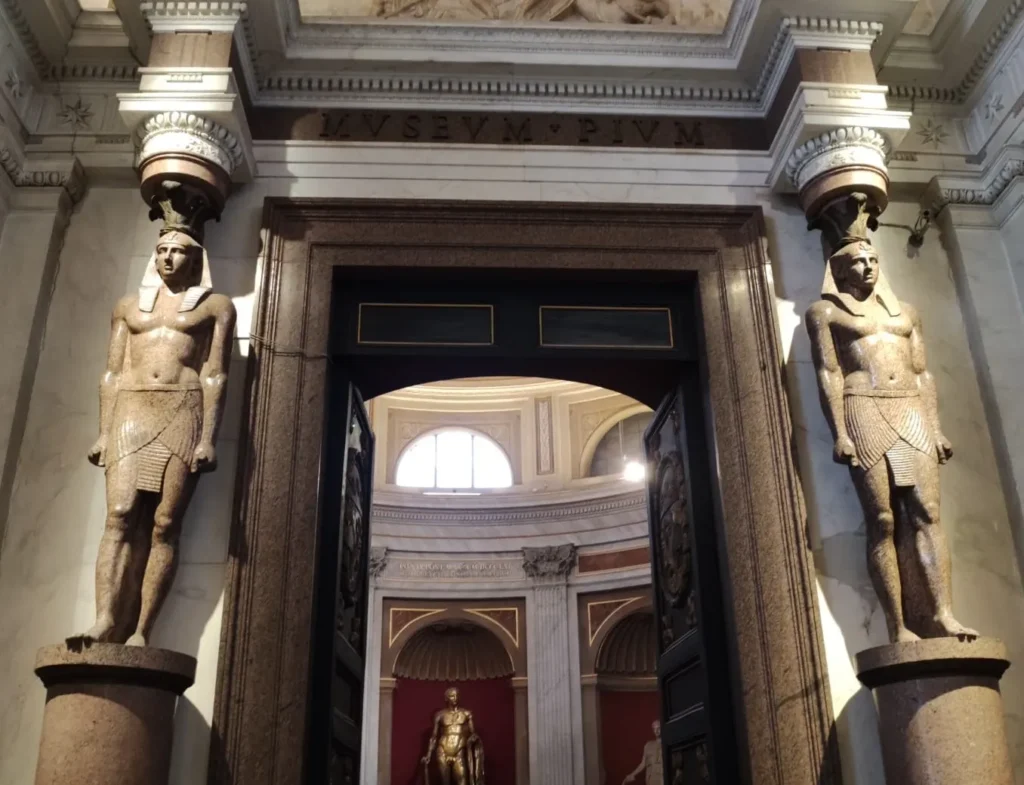
Located within the Cortile della Pigna is one of the Vatican Museums’ most symbolic and fascinating works: the great bronze pinecone, a Roman artifact over four meters tall, flanked by two marble peacocks. This seemingly decorative element reveals deeper meanings related to knowledge and the connection between dimensions.
The pinecone symbolically represents the pineal gland, an organ situated at the center of the human brain, often referred to as the “third eye” for its role in spiritual perception and the connection between the inner and outer worlds. Traditionally, the pineal gland is considered a bridge between the physical and ethereal realms, capable of uniting rational thought with spirituality.
The two peacocks enhance this symbolism: in tradition, peacocks signify immortality and regeneration. This courtyard thus becomes a space for meditation on the relationship between the human and the divine, inviting reflection on humanity’s spiritual evolution.
The Octagonal Garden: Harmony of Form and Knowledge

The Octagonal Garden is another space imbued with symbolism. Its octagonal geometry signifies balance between earth and sky, embodying the perfect harmony of the physical and spiritual dimensions.
Among the garden’s most renowned works are:
- The Belvedere Torso, a fragmented sculpture inspiring reflections on inner human strength.
- The Belvedere Apollo, a symbol of perfection and ideal beauty, embodying universal harmony.
This garden invites contemplation of humanity’s role as a nexus between terrestrial and higher dimensions.
Science in the Vatican Museums: Maps, Documents, and Instruments
The Vatican Museums safeguard crucial evidence of scientific progress. One of the most captivating sections is the Gallery of Maps, which features 16th-century cartographic representations crafted with extraordinary precision. Among them, certain depictions of the globe suggest advanced knowledge of the Earth’s geography, perhaps derived from documents predating the “official discovery” of the New World.
Additionally, astronomical instruments, codes, and manuscripts demonstrate how scientific knowledge has been preserved and transmitted over centuries. Documents on astronomy, medicine, and mechanics attest to the Church’s commitment to safeguarding scientific discoveries and exploring the interplay between faith and reason.
The Gallery of Tapestries: A Triumph of Perspective
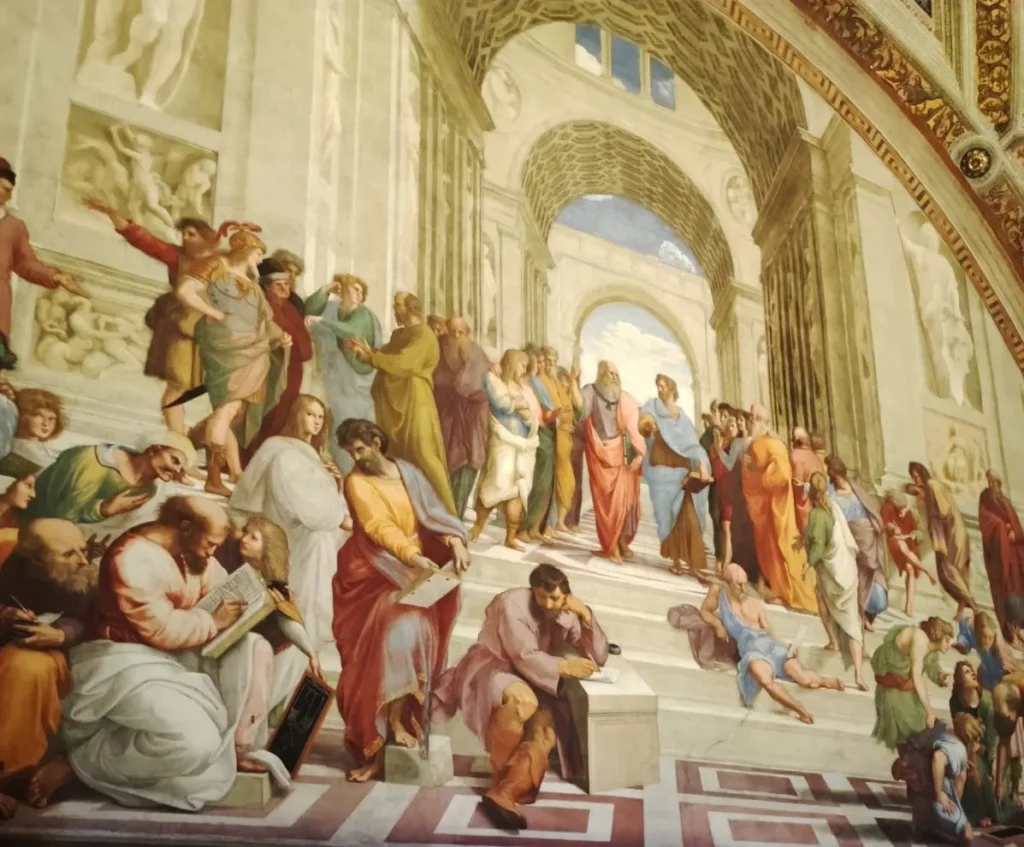
The Gallery of Tapestries astonishes visitors with its magnificence and the extraordinary craftsmanship of Renaissance artists. Created by Raphael’s disciples, the tapestries depict biblical and historical scenes.
What sets these tapestries apart is their masterful illusion of depth: perspective details and the use of light create the sensation that the figures are sculpted, like living bas-reliefs on the walls.
Noteworthy works include:
- The Resurrection of Christ, where the image of Jesus appears to shift with the viewer’s perspective.
- The Adoration of the Magi, rich in detail reflecting the mastery of color and perspective.
The Gallery of Maps: An Ancient World in Miniature
This 120-meter-long gallery showcases 16th-century painted maps depicting the known world in remarkable detail. Each map is a masterpiece of precision and artistry, with some believed to be based on older, more advanced geographical knowledge.
Legend has it that Christopher Columbus consulted ancient Vatican documents before his famed voyage, uncovering clues about unexplored lands. Among the most significant maps are:
- Central and Southern Italy: remarkably accurate for its time.
- The Mediterranean Map: reflecting a deep understanding of maritime routes.
These works demonstrate how science and art intertwine in the depiction of the ancient world.

The Vatican Secret Archives: The Heart of Mystery
The Vatican Secret Archives, accessible only with special permissions (granted to about 120 researchers annually), house confidential documents spanning over a millennium. Among the most intriguing texts believed to be stored here are treaties on advanced astronomy, potentially shedding light on lost knowledge.
The Sistine Chapel: A Visual Tale of Humanity
The Sistine Chapel is the culmination of any visit to the Vatican Museums. Michelangelo’s unparalleled masterpieces narrate the creation, fall, and redemption of humanity.
Key highlights include:
- The Creation of Adam, where the touch between God and man symbolizes the gift of life and knowledge.
- The Last Judgment, illustrating humanity’s ultimate destiny, with Christ at its center as the dominant figure.
The Helical Staircase: The Eternal Journey of Knowledge

The helical staircase that concludes the visit serves as a powerful symbol of ascension and progress. Its spiral form evokes the idea of continuous growth and evolution, a fitting message to end a journey that bridges past, present, and future.
Conclusion
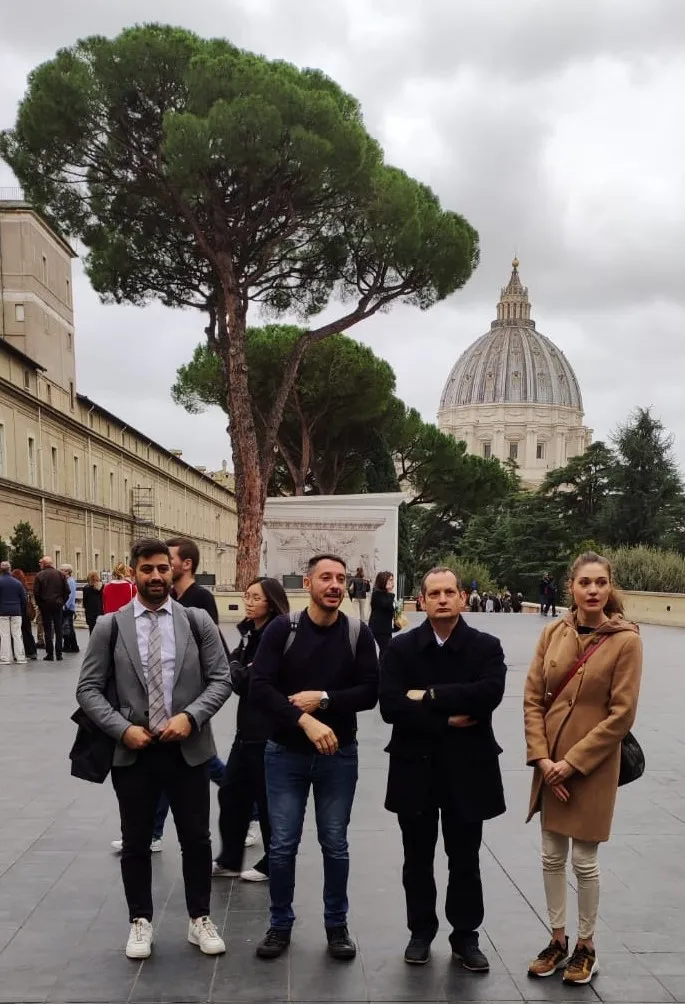
The Vatican Museums are not merely a museum; they are a living historical memory, a meeting point for civilizations, cultures, and hidden knowledge. They represent a bridge between humanity and the divine, between the past and the future. Here, the history of art, science, and spirituality intertwine to narrate the incredible journey of human evolution, raising profound questions about our role in the universe and the forces that have guided—and continue to guide—our path.
